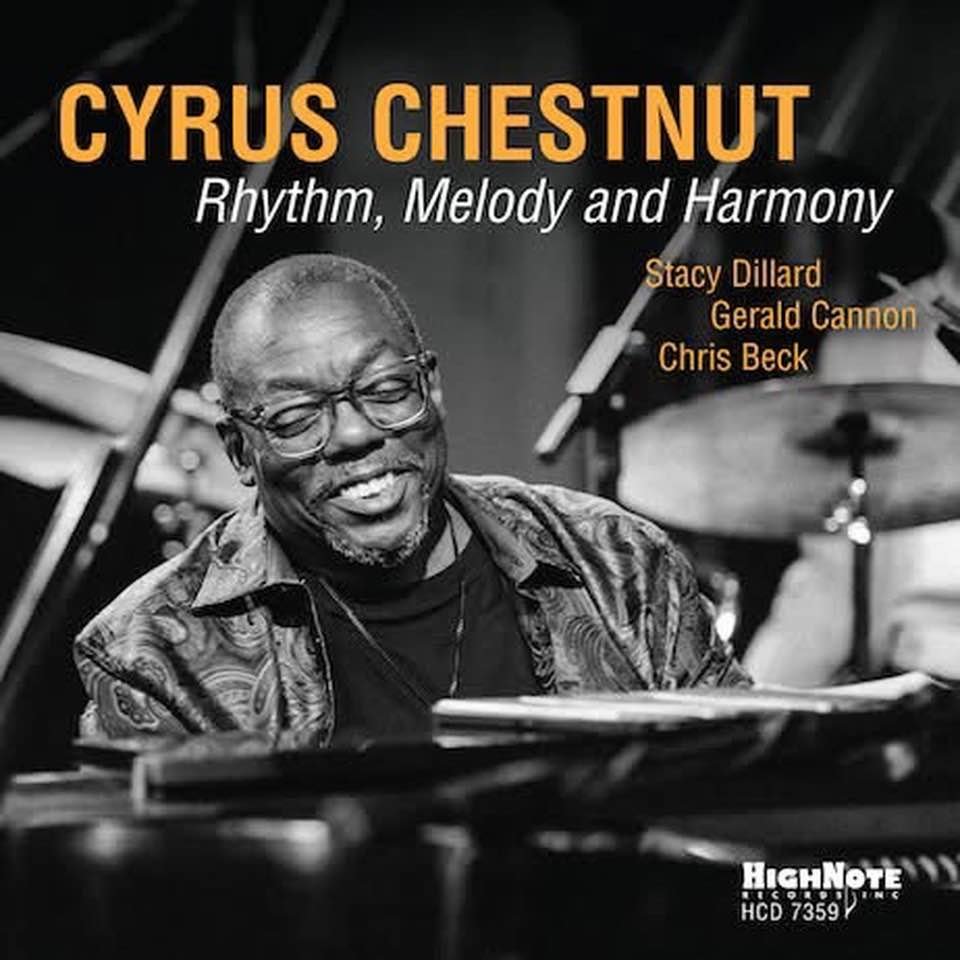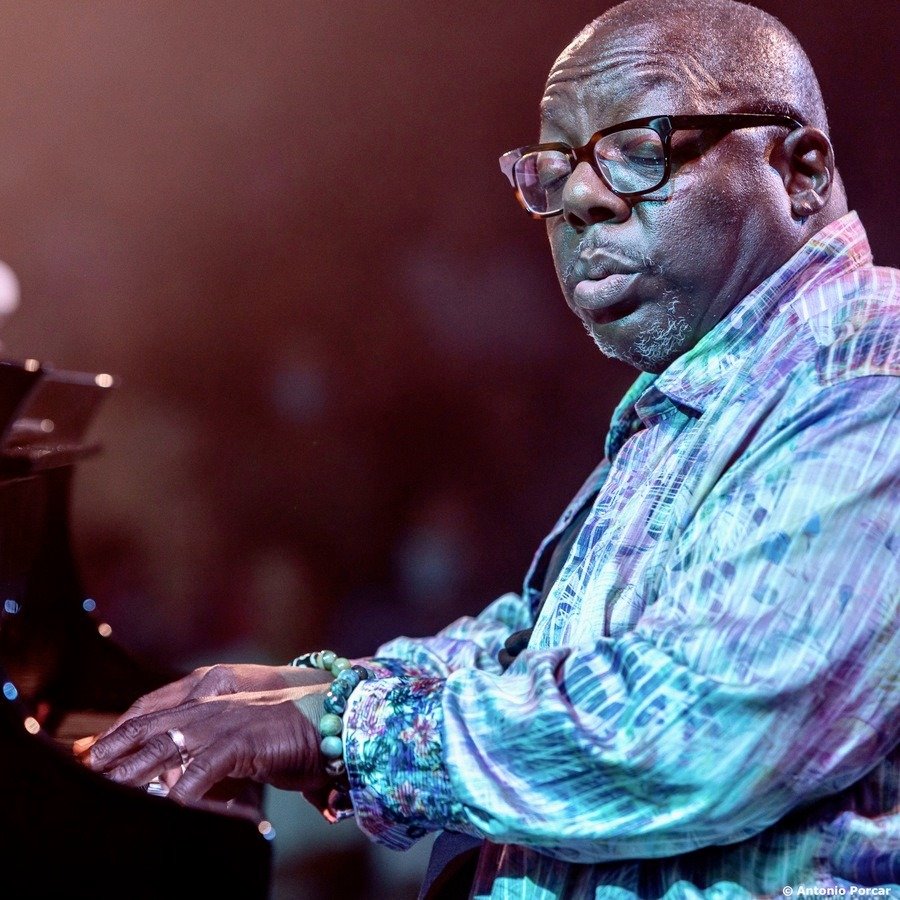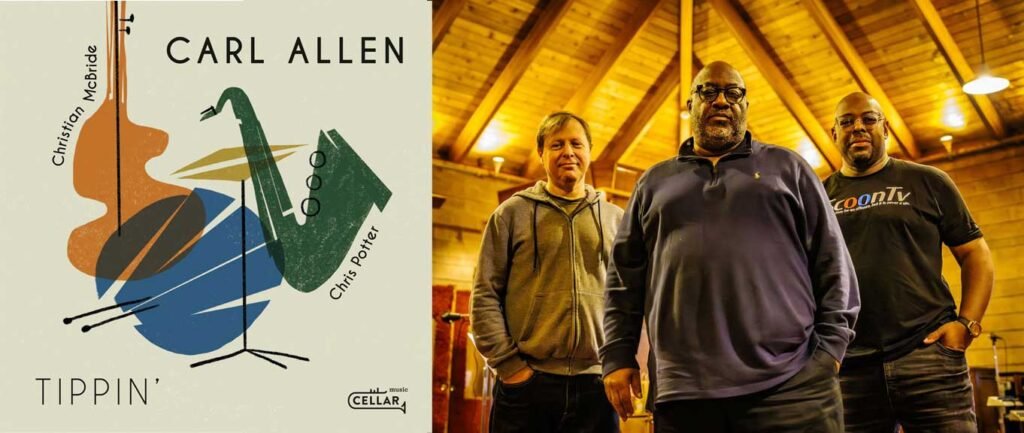Album Review: Cyrus Chestnut – Rhythm, Melody and Harmony

Cyrus Chestnut’s new quartet date is a master class in marrying jazz tradition with fresh energy. Backed by Stacy Dillard on sax (both tenor and soprano), Gerald Cannon on bass and Chris Beck on drums, Chestnut strikes a perfect balance between virtuosity and soul.
From the fight-and-flight swagger of the opener, you can practically feel the blues roots driving “Cured and Seasoned”, to the experimental twists on a standard like “Autumn Leaves,” this group communicates on every level. They take familiar forms and bend them just enough to keep you off-balance, in “Autumn Leaves,” that means a sly nod to the Miles/Adderley intro before flipping into a swing-waltz that sounds brand new.
Originals like “Ami’s Dance” prove these players aren’t content to coast. A chugging bass groove kicks off a Latin-tinged A section, then shifts into gospel-infused harmony that’s irresistibly joyful. And “Prelude for George” shows Chestnut’s compositional chops, unexpected tempo changes, tight unison lines between piano and soprano sax, and harmonic turns that tell a story without ever getting fussy.
The band stays loose but disciplined. On “Twinkle Tones,” Cannon’s singing bass solo sets the tone, and Chestnut responds with a mix of bebop runs and lush chords. Beck’s drumming snaps just right, never overpowering but always propelling. When they move into modal territory on “Song for the Andes,” they keep it conversational, no static vamping here, just a shared musical language that breathes.

“Big Foot” catches you by surprise with its angular themes and playful tension; it’s like a live brainstorm where every musician gets a say. Then Chestnut goes solo on “Moonlight in Vermont,” letting space and resonance tell the story, there’s a gospel sensibility in his voicings, a reminder that every note matters.
The closer, his take on the hymn “There Is a Fountain,” brings it all home. It’s reverent without being stodgy, adventurous without losing the spiritual core. That duality, technical mastery in service of genuine feeling, is what makes this record stand out.
Bottom line: Rhythm, Melody and Harmony isn’t a nostalgia trip. It’s a forward-thinking statement from a quartet locked into each other and the music’s deeper roots. If you want modern acoustic jazz that swings, grooves, and uplifts without ever losing its edge, this is your ticket.
Cyrus Chestnut’s new quartet date is a master class in marrying jazz tradition with fresh energy. Backed by Stacy Dillard on sax (both tenor and soprano), Gerald Cannon on bass and Chris Beck on drums, Chestnut strikes a perfect balance between virtuosity and soul.
From the fight-and-flight swagger of the opener, you can practically feel the blues roots driving “Cured and Seasoned”, to the experimental twists on a standard like “Autumn Leaves,” this group communicates on every level. They take familiar forms and bend them just enough to keep you off-balance, in “Autumn Leaves,” that means a sly nod to the Miles/Adderley intro before flipping into a swing-waltz that sounds brand new.

Originals like “Ami’s Dance” prove these players aren’t content to coast. A chugging bass groove kicks off a Latin-tinged A section, then shifts into gospel-infused harmony that’s irresistibly joyful. And “Prelude for George” shows Chestnut’s compositional chops, unexpected tempo changes, tight unison lines between piano and soprano sax, and harmonic turns that tell a story without ever getting fussy.
The band stays loose but disciplined. On “Twinkle Tones,” Cannon’s singing bass solo sets the tone, and Chestnut responds with a mix of bebop runs and lush chords. Beck’s drumming snaps just right, never overpowering but always propelling. When they move into modal territory on “Song for the Andes,” they keep it conversational, no static vamping here, just a shared musical language that breathes.
“Big Foot” catches you by surprise with its angular themes and playful tension; it’s like a live brainstorm where every musician gets a say. Then Chestnut goes solo on “Moonlight in Vermont,” letting space and resonance tell the story, there’s a gospel sensibility in his voicings, a reminder that every note matters.
The closer, his take on the hymn “There Is a Fountain,” brings it all home. It’s reverent without being stodgy, adventurous without losing the spiritual core. That duality, technical mastery in service of genuine feeling, is what makes this record stand out.
Bottom line: Rhythm, Melody and Harmony isn’t a nostalgia trip. It’s a forward-thinking statement from a quartet locked into each other and the music’s deeper roots. If you want modern acoustic jazz that swings, grooves, and uplifts without ever losing its edge, this is your ticket.






Responses